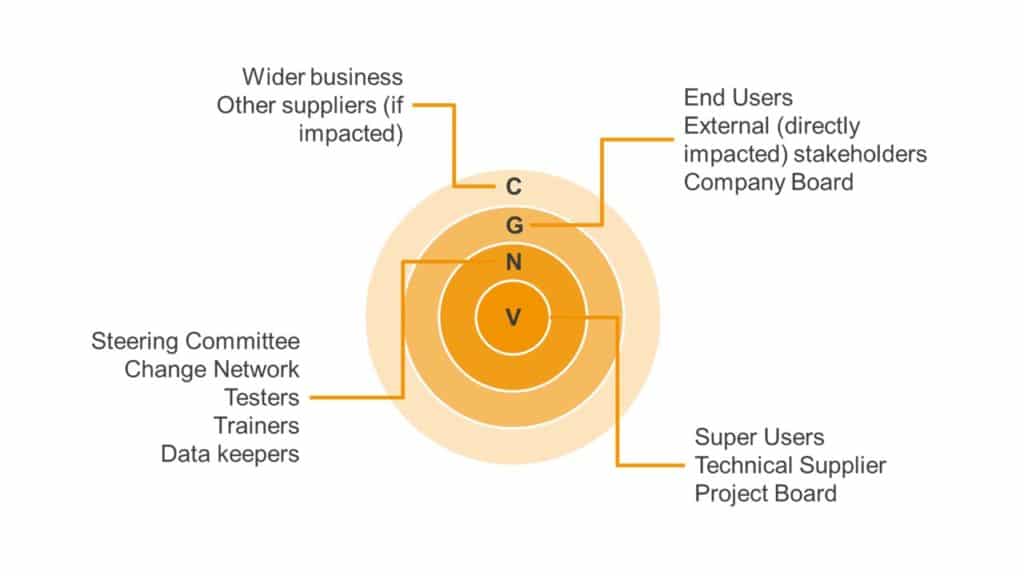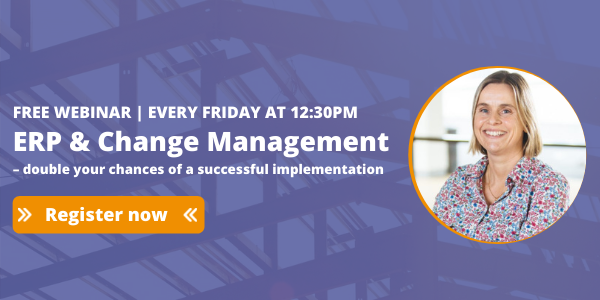We all know communicating significant change should be timely, relevant, and interesting. But what do you do when your project lasts 12m+, and means different things to almost everyone in the company? What if it is a little bland and goes through peaks and troughs of stakeholder involvement?
Indeed, mismanaged ERP communications can result in dragging users along the change curve, as opposed to supporting them. Or even worse, cries of ignorance come go live undermining business operations from day one… Avoiding these mistakes makes early establishment of an empowered change network essential.
Regular and incremental, rather than repetitive, communication through a variety of channels ensures messaging reaches all users. But leaning on an informed and empowered change network, who begin developing their own ownership of the change and implementation outcomes, enables that central messaging to be reinforced with more of a team specific slant. With the added benefit of filtering many of the questions and issues arising for the project team!
Who, when and how?
A good way to start planning the level of detail and frequency of communications for your project is in utilising the Mayfield (2013) stakeholder radar chart. Using this format, you can plot those Vital to engage, Necessary to engage, Good to have on board and those you have a Courtesy to inform.

Those testing or receiving training, need to know:
- The expectations of them
- The role they play in the success of the wider implementation and its benefits
- But most importantly when they will be involved, in advance of their active participation. This helps increase and hold the individual’s interest when you need it most, making them a better listener, tester, and learner. It also avoids change resistors feeling empowered to speak up on behalf of others, which can be challenging to manage in a peer-to-peer scenario.
Those supplying data need to understand the direct impact on their colleagues if they are unable to provide the data in the pre-agreed format to the agreed timeline. To maintain critical goodwill, external stakeholders need to know in advance the extent to which they will be impacted. But for them it is more helpful to have certainty rather than releasing a pre-emptive cat amongst the pigeons.
The much wider business is likely to want reassurance that such an investment of finances and resources will contribute to overall growth. Here its helpful to reiterate key messages, but also highlight the positive impacts that the implementation will have on individuals. For example, using storytelling (with pictures) of real people within the business and how their day-to-day lives will be positively impacted by the ERP implementation. This helps to add personal interest and means those further from the project picture have visibility of the intangible benefits. If you don’t believe me, just look at the world of advertising.
How do you know if your ERP communication plan is getting the message across effectively?
When you spend a significant proportion of time talking to engaged stakeholders, sometimes it’s difficult to identify the disengaged. Regular public requests for feedback although good practice, are unlikely to help. Quick, regular pulse surveys, where you ask a set of questions each time, anonymously, can provide a good tool for measuring if your communications are landing in line with the planned communications phases. Including a team or department can also help identify hotspots or potential problem areas that require intervention, and remember, no feedback is still feedback.
If communications are holding back the success of your ERP Implementation, get in touch so that we can make sure that your people feel informed, equipped and valued. Contact EstherM@NineFeetTall.com

